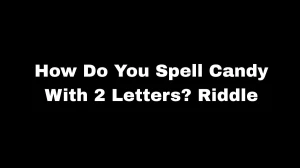Boys Wear It Daily - Riddle Answer Explained
“Boys wear it daily, but girls wear it once a year.” On the surface, this riddle feels ready to send you down a rabbit hole of gender clichés or tradition. First time you hear it, maybe you’re thinking there’s some quirky uniform or cultural habit you’ve missed. But nah—the trick isn’t in overthinking. This one is simple. The wordplay is so basic, it’s almost genius.
The Answer
The answer’s just the letter “Y.” Yeah, really. Not “cap” or “tie” or anything you can wear on your head or around your neck, just the plain old letter Y.
If you look at the word “boys,” there’s a Y hiding in there every time that word is used. That’s “daily,” just like the riddle says. Now, for “girls,” you notice the Y isn’t there in “girls,” but it pops up in “year.” So, girls “wear” the Y—only when you say “year.” That’s once a year.
Answer Explanation
Honestly, riddles like this thrive on tripping people up with language, not logic. The word “wear” gets you thinking clothes or habits, but here, it just means “contain in the word.” Boys get a Y daily (since every time you write, read, or say “boys” you see that Y). Girls, though, just “wear” Y in “year.” That’s what makes the whole riddle work.
Don’t overthink the trick. It’s the presence of the letter “Y” in the word “boys” and in the word “year,” not in “girls.” So the only time girls “wear” it, sorta, is in “year.” It’s kind of clever in a groan-worthy, “dad riddle” way.
What Makes This Riddle Fun
What’s always wild about riddles like this is how they catch people fast. You hear it, and your head instantly spins out possibilities—maybe it’s about hats, maybe about some tradition, something you missed in life. But it’s none of that. All that’s happening here is a little trick with letters.
The actual magic is, you’re forced to slap your forehead when you hear the answer. It was right in front of you the whole time and you missed it, hunting for something complicated. Classic riddle move. That’s the fun—almost feels like a prank on your own brain.
Why These Riddles Work
Wordplay riddles like this tap into the way our minds search for patterns and meaning, sometimes in the wrong spot. You want to dig for deeper meaning, but the answer is just sitting there—blatant, easy, almost obvious in hindsight. It’s pure language, nothing more.
Honestly, the best thing to learn from this: don’t get sucked into overthinking. Sometimes, if something feels too simple to be real, that’s exactly where the answer lives. So, next time this riddle comes up, remember—chill out, take it at face value, and just look for the nearest letter. Sometimes, that’s all it takes to solve the puzzle.






